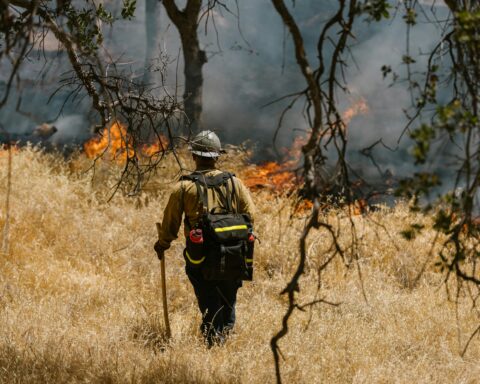The United States Department of Energy (DOE) is making $70 million available to support research projects designed to protect the country’s energy sector against cyber and physical threats, natural disasters and extreme weather.
The funds, available through the DOE’s All-Hazards Energy Resilience program, will support innovative ways to strengthen power grids, electric utilities, pipelines and renewable energy sources such as wind and solar. The competitive funding opportunity is open to public and private stakeholders, including non-profits, universities, state and local governments, tribes and national labs.
“These investments will help save money in the long run by identifying and developing innovative solutions that ensure our nation’s energy infrastructure can withstand emerging threats and the challenges of a changing world,” U.S. Secretary of Energy Jennifer M. Granholm said in a statement.
Risks to the nation’s energy security plummeted to an all-time low in 2019, according to most recent report from the U.S. Chamber of Commerce’s Global Energy Institute. However, security risks are expected to rise in the coming years as technology evolves and natural disasters increase as a result of climate change.
The DOE hopes the funding opportunity will help develop next-generation tools and technology that can be widely adopted throughout the energy sector.
Each entity will be eligible to receive up to $5 million for projects in any of the following categories:
- Cyber Research and Development – Projects designed to reduce risks to energy delivery infrastructure.
- Climate Mitigation Research and Development – Projects that will reduce the impact of climate effects on energy transmission and reliability.
- Wildfire Mitigation Research and Development – Projects that strengthen energy infrastructure at risk for wildfire damage. Project goals should include enabling electric utilities to operate during extreme events and to recover rapidly thereafter.
- Physical Security Research and Development – Projects that protect against physical breaches that can result in vandalism, sabotage, ballistic damage and more. Proposals should go well beyond current approaches to protecting power stations, such as video surveillance systems, access control and physical barriers.
- University-Based Research and Development – Although these proposals can be within the realms of cyber or cyber-physical security, academic applicants must be from historically black colleges and universities (HBCUs). HBCUs should have co-applicants from among energy industry owners, operators, and/or energy sector solution providers.
The All-Hazards Energy Resilience program is being managed by the DOE’s Office of Cybersecurity, Energy Security, and Emergency Response (CESER). In operation since 2018, CESER has partnered with organizations across the energy sector, such as the Electricity Subsector Coordinating Council and the Oil and Natural Gas Subsector Coordinating Council, with the shared goal of preventing energy flow disruption to consumers.
Although CESER’s primary focus is research and development (R&D), the organization has an interest in education, with previously funded projects include a video series focused on clarifying roles within public utility commissions (PUCs), and the CyberForce Competition, a workforce development program.
The deadline to apply is 3 p.m. (Eastern) March 1.
Strategic Partnerships, Inc. can provide information on contract opportunities, plus existing and future government funding. For more information, contact research@spartnerships.com.













